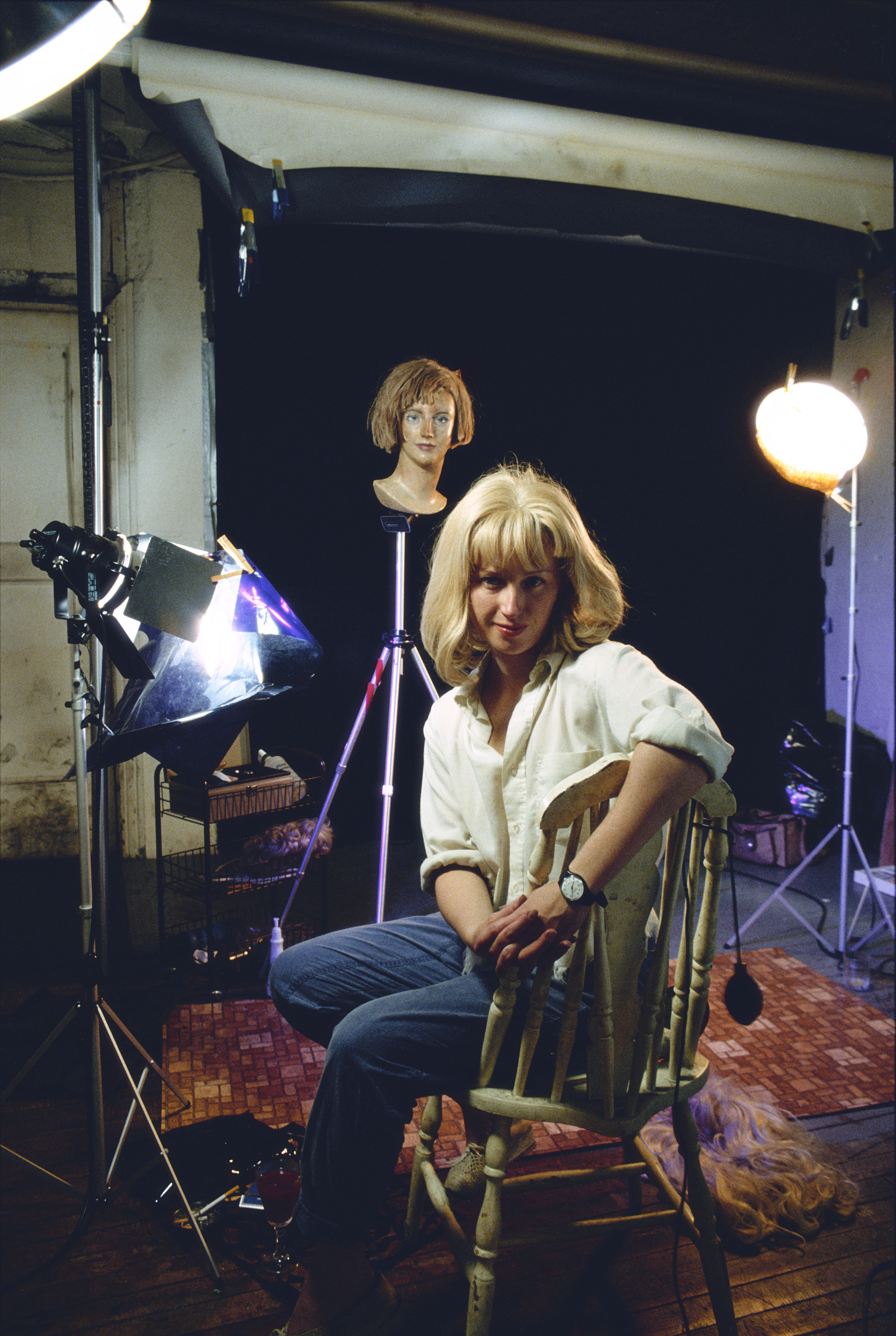
"These 'monsters' have not, then, risen from the depths of 'the sleep of reason.' Sherman implies that they are always there, barely concealed behind the thin veil of illusion and appearances.”

Untitled #146 belongs to Cindy Sherman’s celebrated Fairy Tales series from 1985 which marked a departure from her Untitled Film Stills where Sherman staged herself as generic female film characters from the 1950s and 1960s generating a dialogue about stereotypical portrayals of women.
The Fairy Tales series pursues darker and ominous aspects of female caricatures from well known fables and stories. Emerging from a remarkably inventive time in the artist’s career the present work sees Sherman lean toward unsettling compositional constructions, a theme which would come to dominate her career in the following decades. Untitled #146 is from an edition of six, other examples are included in esteemed institutional collections such as The Broad, Los Angeles and the Whitney Museum of American Art, New York. Untitled #146 has been included in many of Sherman’s pivotal solo and group exhibitions, such as, Portrait of the Art World: A Century of ARTnews Photographs at The National Portrait Gallery in Washington, D.C. in 1990 and her retrospective travelling exhibition at the Jeu de Paume in Paris in 2006. Untitled #146 was acquired from Metro Pictures in its debut exhibition in 1985 by the present owner. It has remained in the same private collection for the last thirty-seven years.
An artist known for transforming herself before the lens, Sherman exhibits masterful control of her own construction in Untitled #146, moving away from the nostalgia of her Untitled Film Stills in which she glamorously depicts 1950s film characters and instead shifting the camera on a disquieting side of femininity. The inception of the Fairy Tales photographs was initially inspired by Vanity Fair magazine, who invited Cindy Sherman in 1985 to create a series of photographs based on children’s fairy tales. The arresting and theatrical pictures imploded nostalgic expectations and aligned more closely with the dark fantasies of eighteenth and nineteenth-century fables by the Brothers Grimm and Hans Christian Andersen than classic bedtime stories. With this series, Sherman shocked her audience by replacing the sentimental with the disquieting, resisting reference to any specific story, the ambiguity of the Fairy Tales allows for an elasticity of interpretation that lends each a highly enigmatic resonance.

Perched with a primal alertness, Untitled #146 revels in its own fantastical artificiality. A tattered shawl wraps low around her torso, while a golden glow cascades down to illuminate the glinting finish of her prosthetic breasts--a recurring element utilized in this series. The Fairy Tales series marks a critical point in Sherman’s oeuvre in which she moves beyond wigs and costumes to fully embrace the use of prosthetics, their usage testifying to her adaptability and growth as an artist, while also offering a profound statement on her physical limitations as a woman.
Cindy Sherman's Fairytale Series in Museum Collections
In Untitled #146, Sherman is determined to expose the rosy-hued world of fairy tales for their flawed reality. Blue gel filter sheets, commonly used in stage production or photography to produce colored lighting fixtures, hang crookedly from the top edge of the photograph to give the impression of shattered glass, insinuating a broken barrier between Sherman and the object of her gaze. This, combined with the exposed backdrop and Sherman’s explicit prostheses, accentuates the artificial construction of the photograph itself, and of the idealized notions of womanhood it seeks to subvert.
In the exhibition catalogue published in conjunction with traveling exhibition Cindy Sherman at the Jeu de Paume in Paris, art historian and critic Regis Durand writes about the implications of these poorly concealed constructions in Sherman’s Fairy Tales. He writes: “What disasters have given rise to grotesque scenes? As with the Fairy Tales, it is impossible for us to say. Sherman herself has doubtless no intention of venturing any more or less rational explanation. Clearly, we are presented with a dark vision—perhaps the hidden face of our society’s cult of beauty and normality, and the soothing, idealized images (from the world of advertising, in particular) that fill our daily lives. These “monsters” have not, then, risen from the depths of “the sleep of reason.” Sherman implies that they are always there, barely concealed behind the thin veil of illusion and appearances.” (Regis Durand, et al., Cindy Sherman, Exh. Cat., Paris, Jeu de Paume (and travelling), 2006, p. 254).
“I wanted something visually offensive but seductive, beautiful and textural as well, to suck you up and then repulse you.”
While plainly fictive, Sherman’s cinematic tableaux before 1985 were rooted in the framework of the real world; in her Fairy Tales, she reached entirely new heights in the scope of her artistic imagination. As is exemplary of Sherman’s oeuvre, the present work exposes the camera’s ability to manipulate images, deftly unravelling the viewer’s passive acceptance of such constructions as truth. In Untitled #146, we are irresistibly lured into a compelling drama and seduced into providing our own reading of the scene; yet by its very nature, we concomitantly understand the inherent fiction of this compelling spectacle. As such, the work stands as a symbol of Sherman's metamorphic practice as well as her status as an artist, irreverent and unimpeded by tradition or expectation but elevated by her own manipulation of the clichés she simultaneously destabilizes.


















